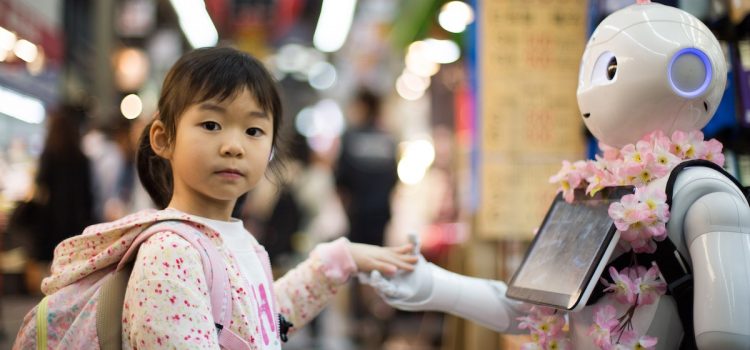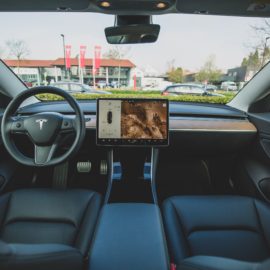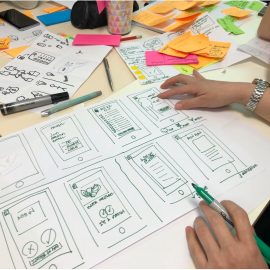

This article is an excerpt from the Shortform book guide to "Hit Refresh" by Satya Nadella. Shortform has the world's best summaries and analyses of books you should be reading.
Like this article? Sign up for a free trial here.
What concerns should we have about artificial intelligence? What do we need to keep in mind as the relationship between humans and machines advances?
Microsoft CEO Satya Nadella is fascinated by artificial intelligence (AI). In his book Hit Refresh, he discusses the three principles behind Microsoft’s approach to AI, acknowledging that AI will become more and more a part of our lives.
Continue reading to learn about Microsoft’s AI philosophy.
Microsoft’s Approach to AI
Nadella’s book includes a chapter titled “The Future of Humans and Machines.” He believes that artificial intelligence will play a huge role in people’s day-to-day lives in the future. AI can significantly reduce the time we spend on tedious tasks such as paying bills so that we can have more time for productive and creative pursuits.
However, Nadella also emphasizes the need to develop AI and other automation in a way that does not disempower people or bring too much hardship or unemployment. As AI becomes increasingly important in many workplaces, the concern is that it could render many currently human-driven roles obsolete, eliminating opportunities for the less-educated and less-specialized workers.
Nadella acknowledges these potential pitfalls but maintains that, with the right approach, AI can become a net benefit in the workplace and for humanity as a whole.
He lays out three core principles that shape Microsoft’s approach to AI:
1) Augmentation, not replacement. Nadella argues that AI can’t and shouldn’t lead to widespread permanent unemployment or any other form of human suffering. Instead, he stresses that AI should involve meaningful collaboration and augmentation between humans and technology, creating new employment opportunities instead of just eliminating old ones.
He gives aviation as an example of AI and humans working together—we don’t think of aviation as “artificial flight”—it’s simply flight. In the same way, we shouldn’t think of technological intelligence as artificial but rather as intelligence that is still powered by human capabilities and capacities. He adds that while AI can process larger amounts of data more quickly, it lacks human creativity and empathy. Lastly, he argues that humans will no longer have to put their lives at risk by working in jobs like mining—we can eventually rely on AI to take on dangerous tasks.
(Shortform note: Nadella is optimistic that AI won’t lead to widespread unemployment, but Yuval Noah Harari argues otherwise in 21 Lessons for the 21st Century. He writes that, despite the possibility of humans and AI working together, it’s likely that there will still be a net loss in employment due to AI. He thus recommends that governments prepare for a “post-work society” by: 1) implementing a universal basic income, which taxes corporations and billionaires and distributes the money to the rest of the population, 2) broadening the definition of work to include unpaid “jobs” like people who take care of elderly relatives, and 3) providing free basic services—education, transportation, health care—instead of basic income.)
2) Transparency in AI tech. Since AI can be quite intrusive and gather an enormous amount of sensitive personal data with ease, Nadella acknowledges the pressing need to ensure that AI technology is transparent in how it collects and uses data and that respect for consumer privacy should be an inherent part of Microsoft’s AI technology. AI must be designed for intelligent privacy, embodying sophisticated protections that secure personal and group information in ways that earn trust.
(Shortform note: Being transparent about AI is especially crucial for businesses now, as research shows that consumers are more aware of the risks associated with the use of AI. In one survey, respondents said that they would have more trust and loyalty in and purchase more products from companies that use AI more ethically.)
3) Inclusivity. Nadella says that AI technology must be sensitive to the needs of inclusion and diversity across all ethnic, racial, and gender categories. To ensure this outcome, we need to ensure that the tech industry isn’t controlled by the privileged few and that the design of these systems has the input and participation of people from various cultures.
(Shortform note: Nadella is right in saying that the tech industry needs the input and participation of a more diverse range of people. Otherwise, AI itself can learn to be biased—for example, Amazon had to abandon its recruiting engine because it was found to be biased against women. That’s because it was trained by observing patterns in resumes submitted in the tech industry, which were overwhelmingly male.)

———End of Preview———
Like what you just read? Read the rest of the world's best book summary and analysis of Satya Nadella's "Hit Refresh" at Shortform.
Here's what you'll find in our full Hit Refresh summary:
- How Satya Nadella brought Microsoft back from its decline
- Actionable advice to help you reinvigorate your company
- A look at the ethical responsibilities of tech companies






